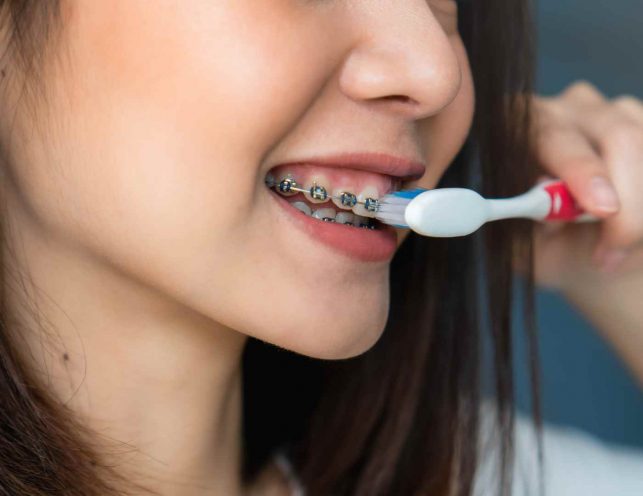Navigating Braces: Understanding the Process, Easing Discomfort, and Maintaining Oral Health
Braces are a transformative tool in dentistry, correcting misaligned teeth for improved oral health and a confident smile. However, the journey to a straighter smile can sometimes be accompanied by discomfort. In this guide, we’ll delve into how braces work, the benefits they offer, the causes of braces pain, and practical tips for pain relief and maintaining optimal oral hygiene throughout the orthodontic process.
How Braces Work:
Understanding the mechanics of braces can prepare you for the changes happening in your mouth. Braces work by applying continuous pressure on the teeth through two main components:
- Brackets: These are attached to each tooth or a band surrounding the tooth, holding the wires responsible for moving the teeth. Brackets may contribute to braces pain, especially after adjustments.
- Wires (Arch Wires): These wires connect the brackets and are adjusted during orthodontic visits. Adjustments may cause temporary braces pain, but they play a crucial role in the teeth-straightening process.
Benefits of Braces:
While braces pain might be a temporary inconvenience, the long-term benefits are substantial:
- Easier Oral Care: Straight teeth are easier to clean, reducing the risk of tooth decay and gum disease.
- Increased Confidence: A corrected smile enhances self-confidence, positively impacting overall well-being.
Causes of Braces Pain:
Braces pain can be attributed to internal and external factors.
- Internal Factors: Changes in blood flow due to the pressure applied by braces may contribute to discomfort.
- External Factors: Physical rubbing of brackets and wires against the soft tissues inside the mouth can cause braces pain. Additionally, arch wires may poke into the back of the mouth, leading to discomfort.
Relieving Braces Pain:
Several strategies can help alleviate braces pain:
- Over-the-Counter Pain Relievers: Products like Motrin or Advil can provide relief from pressure-related braces pain.
- Topical Pain Relievers: Consider using topical products recommended by your dentist for localized pain relief.
- Soft Diet: Stick to soft foods like Jello, pasta, and soft-cooked vegetables, especially after orthodontic adjustments.
- Soft-Bristled Toothbrush: Use a soft-bristled toothbrush to minimize irritation.
- Mouth Guards: If you engage in contact sports, protect your braces with a mouth guard to prevent damage and additional pain.
How to Brush Your Teeth with Braces:
Maintaining oral hygiene is crucial when wearing braces. Here’s how to effectively clean your teeth:
- Specialized Brushes: Use a toothbrush designed for braces to reach between brackets and hardware.
- Thorough Brushing: Brush from top to bottom and between all braces, dedicating extra time to ensure comprehensive cleaning.
- Frequent Brushing: Brush after every snack or meal to prevent food particle buildup.
- Anti-Plaque Mouth Rinse: Incorporate an anti-plaque/gingivitis mouth rinse to remove particles inaccessible to your toothbrush.
- Professional Guidance: Consult your dental professional for recommendations and techniques tailored to brushing with braces.
Conclusion: Embracing the journey to a straighter smile involves understanding the mechanics of braces, managing temporary discomfort, and prioritizing oral hygiene. By incorporating these insights and following practical tips, you can navigate the braces experience with confidence, knowing that the end result—a healthy, beautiful smile—is well worth the effort.
Sources:


